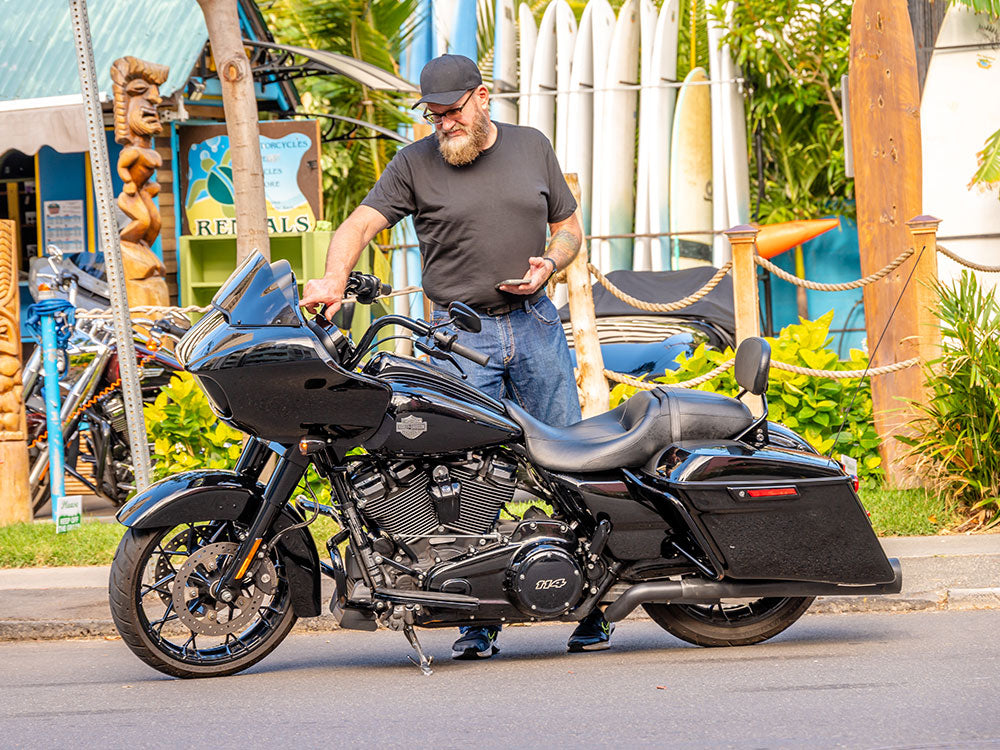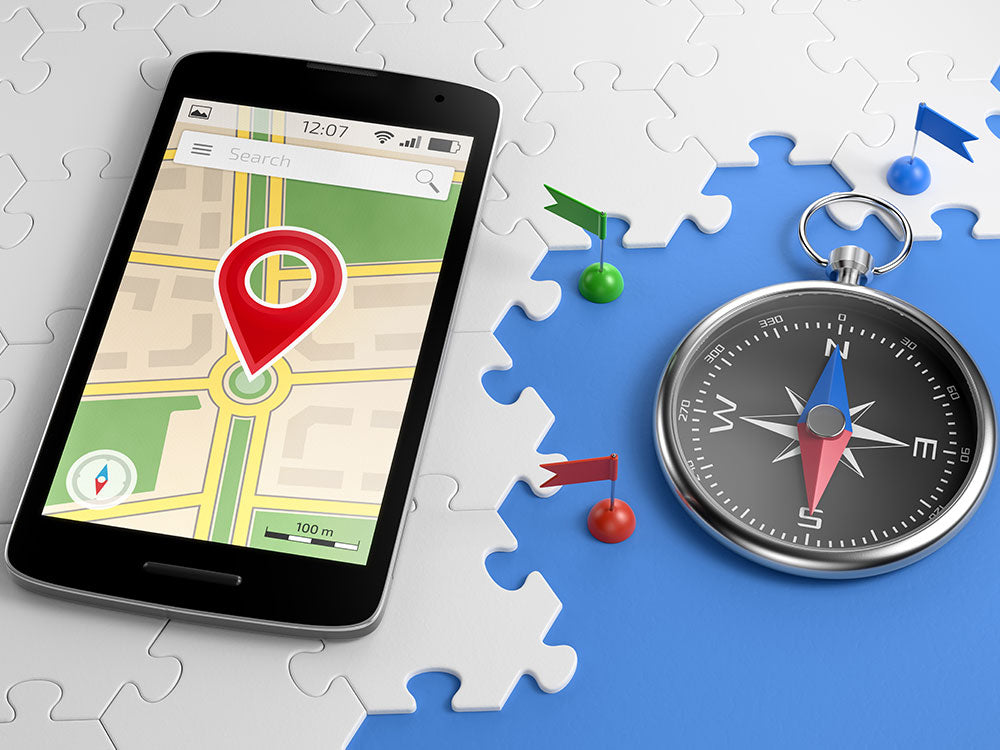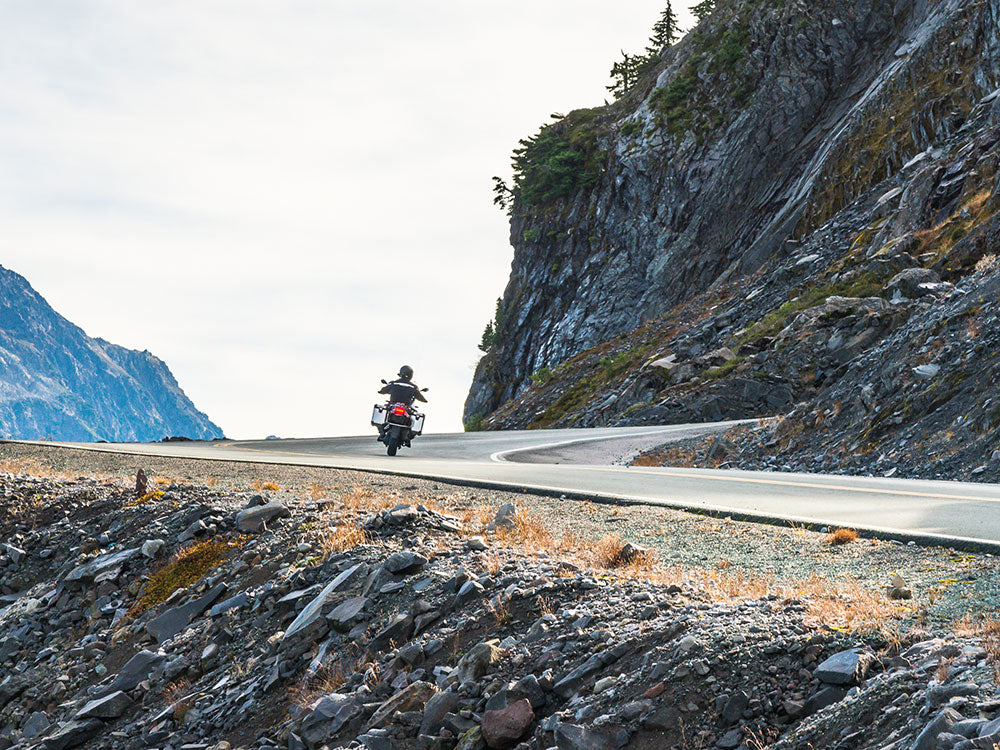Table of Content
1. Introduction
Despite being separated from each other, the Hawaiian Islands have plenty of highways to traverse. They cut through the valleys, climb on top of mountains, and travel close to the cliffsides. Because the terrain on the tropical islands is so diverse, the conditions of the roads you travel on will also differ. Such a challenge is easy for an experienced rider but could prove to be a challenge to someone who has never handled a motorcycle before. Educating yourself on the guidelines you need to follow when riding a motorcycle can make all the difference.
If you wish to traverse Hawaii safely, you will need to get better acquainted with the state’s motorcycle laws and licensing information.
2. Hawaii Motorcycle Insurance

Even if you do everything right, stay in your lane, follow the traffic lights, etc., accidents can still happen that are not your fault. Worse, you can end up with injuries and a wrecked motorcycle that you have to pay for.
Every owner of a motor vehicle has to be financially stable so they can maintain the upkeep of their vehicles. They must also afford the appropriate insurance just in case an accident occurs.
The required Hawaii motorcycle insurance relates to both bodily injuries and property damages. As long as you can afford the following expenses, you are clear to operate in Hawaii:
- $20,000 for bodily injury to a person per accident
- $40,000 for bodily injuries to multiple people per accident
- $10,000 for property damages sustained per accident
Some accidents can be more severe than others or other factors may have led to a collision. Sometimes your motorcycle can get damaged outside of an accident. To be prepared for such eventualities, you can take your pick of optional insurance coverage:
- Uninsured coverage
- Underinsured coverage
- Collision coverage
- Comprehensive coverage
- Bodily injury coverage
3. Hawaii Motorcycle Helmet Laws
In Hawaii, it is mandatory for riders under the age of 18 to have a motorcycle helmet fastened. Because a motorcycle does not offer much protection from road hazards and other vehicles, it is best to have as much protection on your person as possible.
Picking either a three-quarter or full-face helmet will greatly reduce the risk of trauma to your head. You can pick one over the other depending on how you prefer to ride a motorcycle. If you want to ensure your head is completely protected, go with the full-face helmet. If you want better airflow, then the three-quarter helmet is the better choice.
| Hawaii Motorcycle Helmet Laws Chart | ||
|---|---|---|
| Requirements | Three-Quarter Helmet | Full-Face Helmet |
| Has the Department of Transportation (DOT) sticker | ✔ | ✔ |
| Contours around your head to fit snugly | ✔ | ✔ |
| No signs of damage (Ex:// cracks, loose padding, scratches, or frayed straps) |
✔ | ✔ |
| Has a face shield with no scratches | X | ✔ |
| Includes separate eye protection with no scratches (Ex:// goggles, glasses) |
✔ | X |
| Has a hard and durable outer shell that is shatter-resistant | ✔ | ✔ |
| Gives you a clear, peripheral view of your surroundings | ✔ | ✔ |
| Securely fastened with neck- or chin-strap | ✔ | ✔ |
| Allows airflow without fogging up | ✔ | ✔ |
| Can allow you to wear sunglasses underneath | ✔ | ✔ |
4. Hawaii Motorcycle License Laws

4.1 Hawaii Motorcycle Instruction Permit
The earliest you can apply for a Hawaii motorcycle instruction permit is when you are 16 if you have the $10 to pay the necessary fee for a permit valid for one year.
Whether you are a teenager or an adult, you should have no problem acquiring your Hawaii motorcycle instruction permit as long as you abide by the following obligations:
- If you are under the age of 18:
- Have signature and consent from a parent or legal guardian
- Present identification documents
- Provide proof of Hawaii residency
- Provide proof of U.S. citizenship
- Provide your Social Security Number
- Take a photo
- Have a clean driving record on the National Driver Registry
- Pass the rules of the road written exam
- Pass the motorcycle written exam
- Pass the vision exam
- Pay the required fees
Since those in possession of a Hawaii motorcycle instruction permit are not fully accustomed to riding a motorcycle, the rules listed below try to promote better safety habits and safe environment to practice:
- You cannot transport passengers
- You can only operate during daylight hours
- You must wear motorcycle protective gear
4.2 Hawaii Motorcycle License
If you are between the age of 16 to 18, that is the age range recommended for teenage riders who wish to start early. You will have to pay a fee that will vary depending on your age and how long the Hawaii motorcycle license is valid:
- Valid for one year - $5
- Valid for two years (Ages 72 and above) - $10
- Valid for four years (Ages 18 to 24) - $20
- Valid for eight years (Ages 25 to 71) - $40
| Hawaii Motorcycle License Chart | ||
|---|---|---|
| Requirements | Applicants Ages 16 to 17 |
Applicants Ages 18 and Above |
| Have a valid Hawaii motorcycle instruction permit | ✔ | ✔ |
| Held onto a Hawaii motorcycle learner’s permit for at least 90 days | ✔ | X |
| Complete a Basic Driver Education course | ✔ | X |
| Complete a Motorcycle Safety Foundation course | ✔* | ✔* |
| Submit a Driver Education Certificate | ✔ | X |
| Submit a Behind the Wheel Motorcycle Certificate | ✔ | X |
| Provide proof of Hawaii motorcycle insurance | ✔ | ✔ |
| Provide proof of Hawaii vehicle registration | ✔ | ✔ |
| Fill out the appropriate driver’s license application | ✔ | ✔ |
| Must have the consent of a parent or legal guardian if you are a minor | ✔ | X |
| Provide your social security number | ✔ | ✔ |
| Pay required fees | ✔ | ✔ |
| Present valid photo I.D. | ✔ | ✔ |
| Take a photo | ✔ | ✔ |
| Take vision exam | ✔ | ✔ |
| Pass the rules of the road written test | ✔ | ✔ |
| Pass the motorcycle written test | ✔ | ✔ |
| Pass the road skills test | ✔* | ✔* |
| Provide proof of U.S. citizenship | ✔ | ✔ |
| Provide proof of residency in Hawaii | ✔ | ✔ |
*Applicants that complete a Motorcycle Safety Foundation course and submit a Certificate of Completion to the DMV have the option of having the road skills test waived.
4.3 Hawaii Motorcycle License Test
Written Portion:
- Will be completed on touch-screen computers
- Complete 25 multiple-choice questions
- Questions will be based on content from Hawaii Motorcycle Operator Manual
- Will be tested on an understanding of road rules and safe riding practices
- Requires a passing grade of 80% or higher
Road Skills Portion:
- Will be conducted in a controlled, off-street area or an actual traffic environment
- Your motorcycle will be subjected to a pre-ride inspection to ensure it meets safety standards
- Demonstrate a basic understanding of motorcycle operation
- You will be tested on your ability to stay within the speed limit, adjust speed and position, maintain visibility, operate under stress, accelerate, brake, turn, stop, and swerve
- The examiner will grade you based on how well you ride at safe speeds, stay within the lanes, and demonstrate riding maneuvers
5. Hawaii Motorcycle Passenger Laws
In Hawaii, you are not allowed to carry children under the age of seven on your motorcycle. You are also not allowed to carry passengers under the age of 18 that cannot or refuse to wear a motorcycle helmet.
Since you do not want your passenger sliding off your motorcycle, you must have a designated passenger seat in place. A sidecar offers protection for the passenger’s lower body due to having a metallic shell for the passenger to sit in. A pillion set close to the fender allows the passenger to freely move his/her legs.
6. Hawaii Lane Splitting Laws

Lane splitting is illegal in Hawaii. Though your motorcycle is capable of slipping between slowed or stopped lines of vehicles, you are not permitted to do so. You are similarly restricted from traveling on top of the dividing lines.
Riding a motorcycle still gives you a wide range of movement as you can lane share with another motorcycle and adjust your position within the space of a lane.
7. Hawaii Motorcycle Equipment Requirements
In Hawaii, there are state-approved inspection stations full of officials who can give you an accurate report on the condition of your motorcycle. At least once a year, allow your motorcycle to be examined at one of these locations. Besides fulfilling a requirement, it will make it easier to identify any broken or faulty parts.
Since your motorcycle cannot safely run or signal to other drivers if all the parts are not working in unison, give all of the essential motorcycle equipment a quick check-up.

- Horn
- Wheels
- Tires
- Handlebars
- Front and Rear Brakes
- Controls
- Headlight
- Taillight
- Brake Light
- Turn Signals
- Exhaust System
- Muffler
- Rearview Mirrors













Leave a comment
All comments are moderated before being published.
This site is protected by hCaptcha and the hCaptcha Privacy Policy and Terms of Service apply.